Critical Review of Early Childhood Education Readings Report
VerifiedAdded on 2021/04/21
|9
|1720
|30
Report
AI Summary
This report offers a critical review of four readings centered on early childhood education and the role of play. The review examines the perspectives of Marilyn Fleer and other authors, focusing on the relationship between play, education, and development. The readings discuss various viewpoints on play, including progressive, cultural-historical, and critical perspectives, and their implications for primary childhood education. The report analyzes the theoretical frameworks, including the views of Australian teachers on play, and explores the implications for curriculum design and parental involvement. The review highlights the importance of play in fostering healthy growth, energizing the brain, and bridging the gap between parents and children. The report also discusses the impact of reduced playtime in schools and the need for parents and teachers to recognize the significance of play in a child's life. It concludes by emphasizing the importance of active learning and the role of teachers in creating a friendly learning environment for children.
1 out of 9
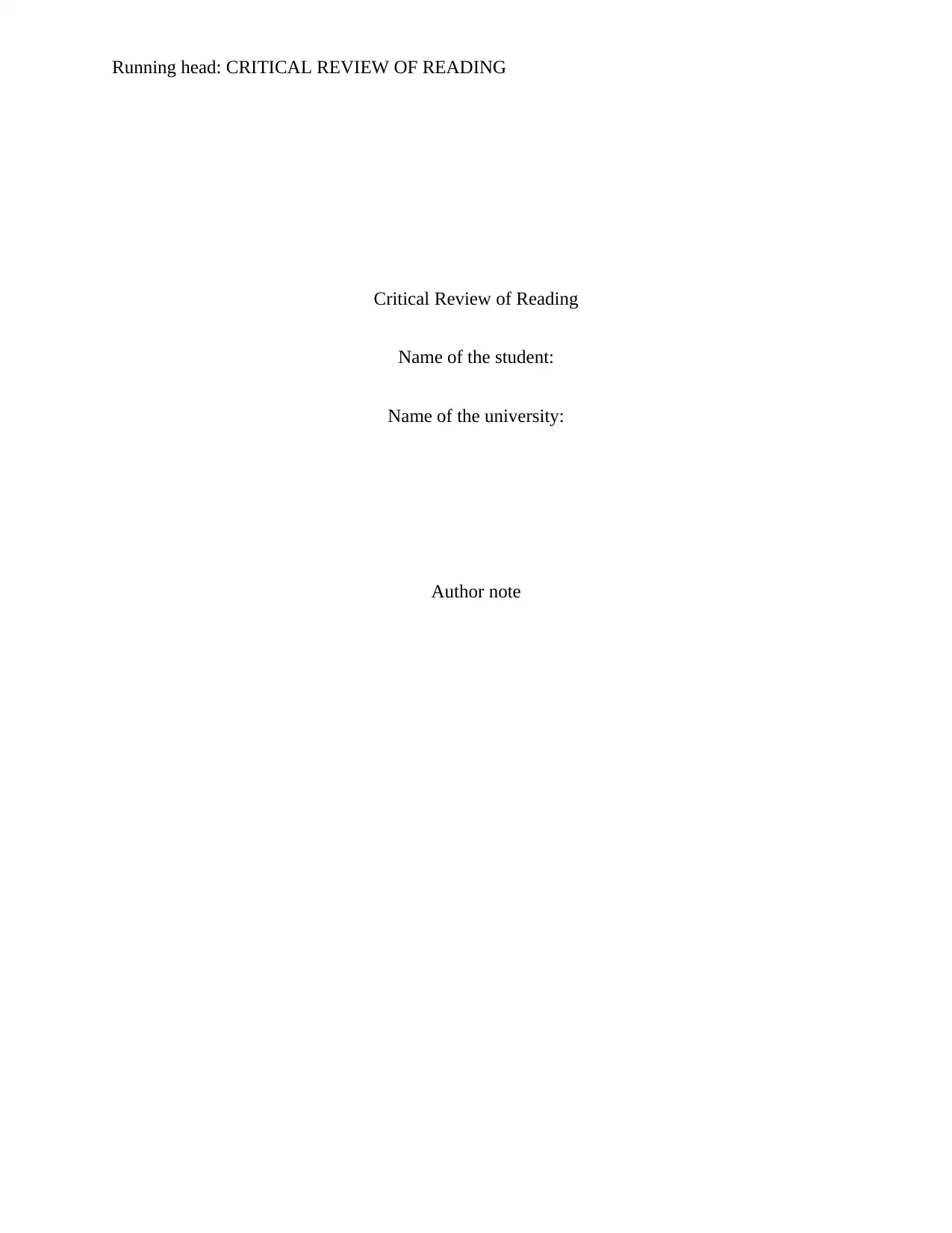
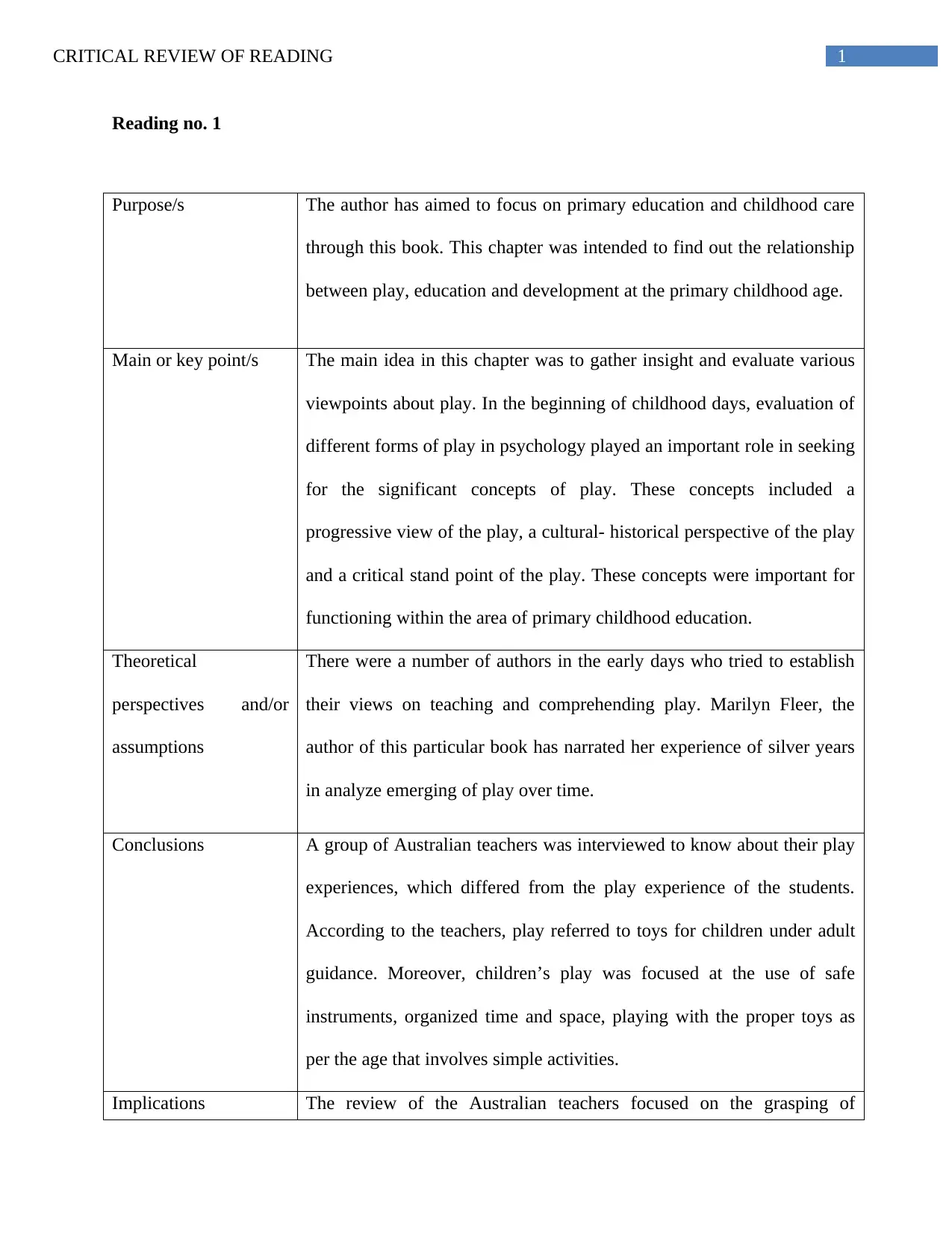
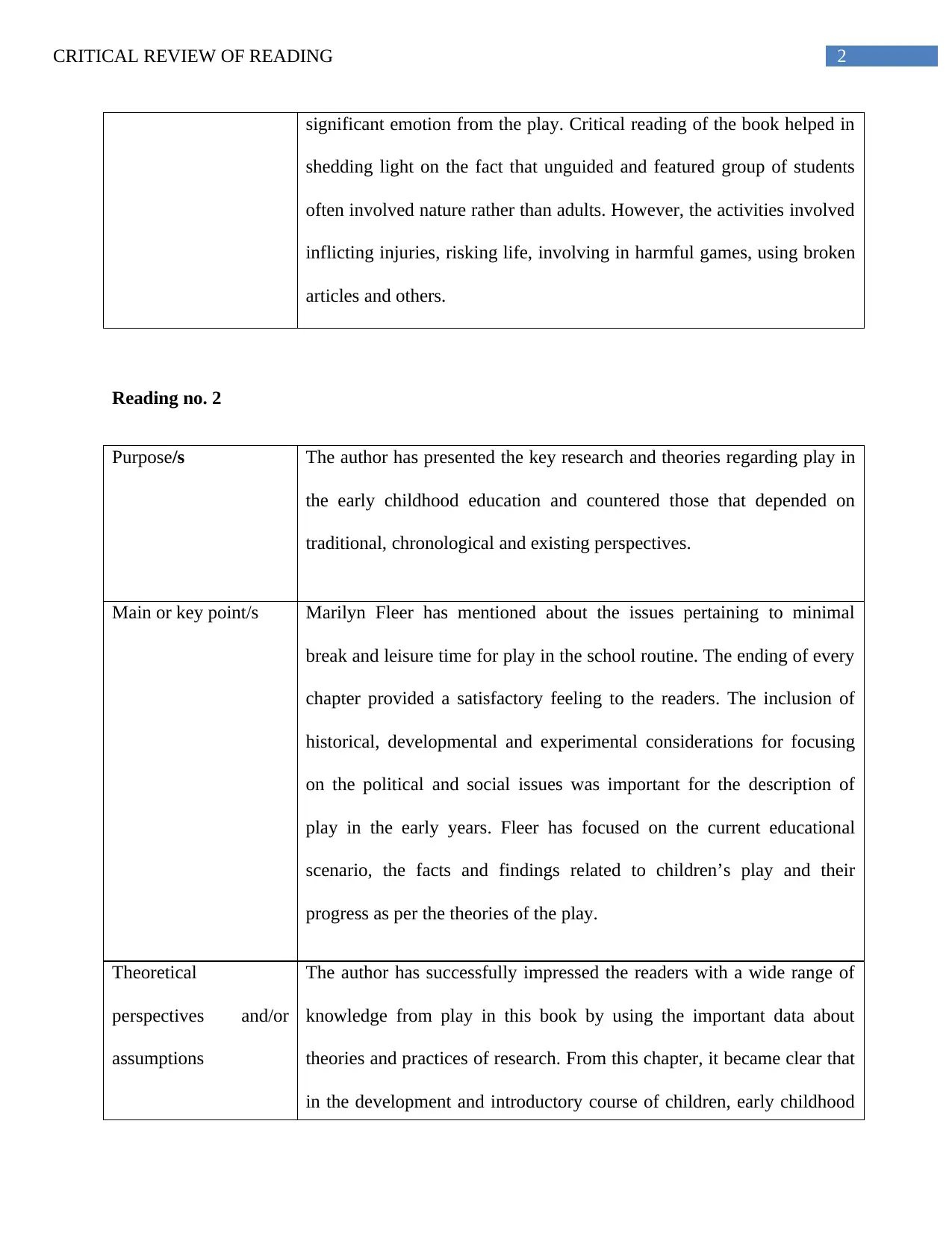
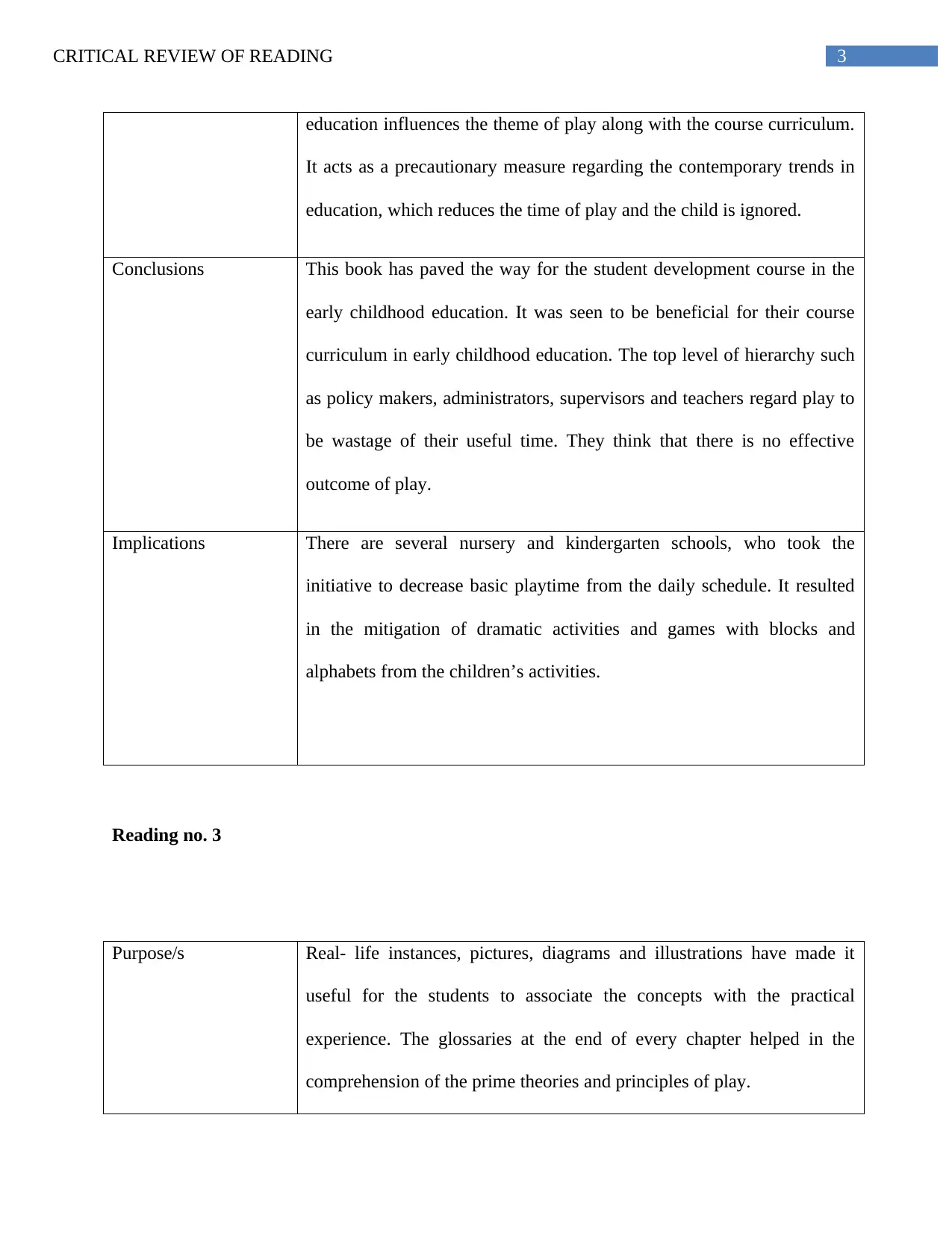
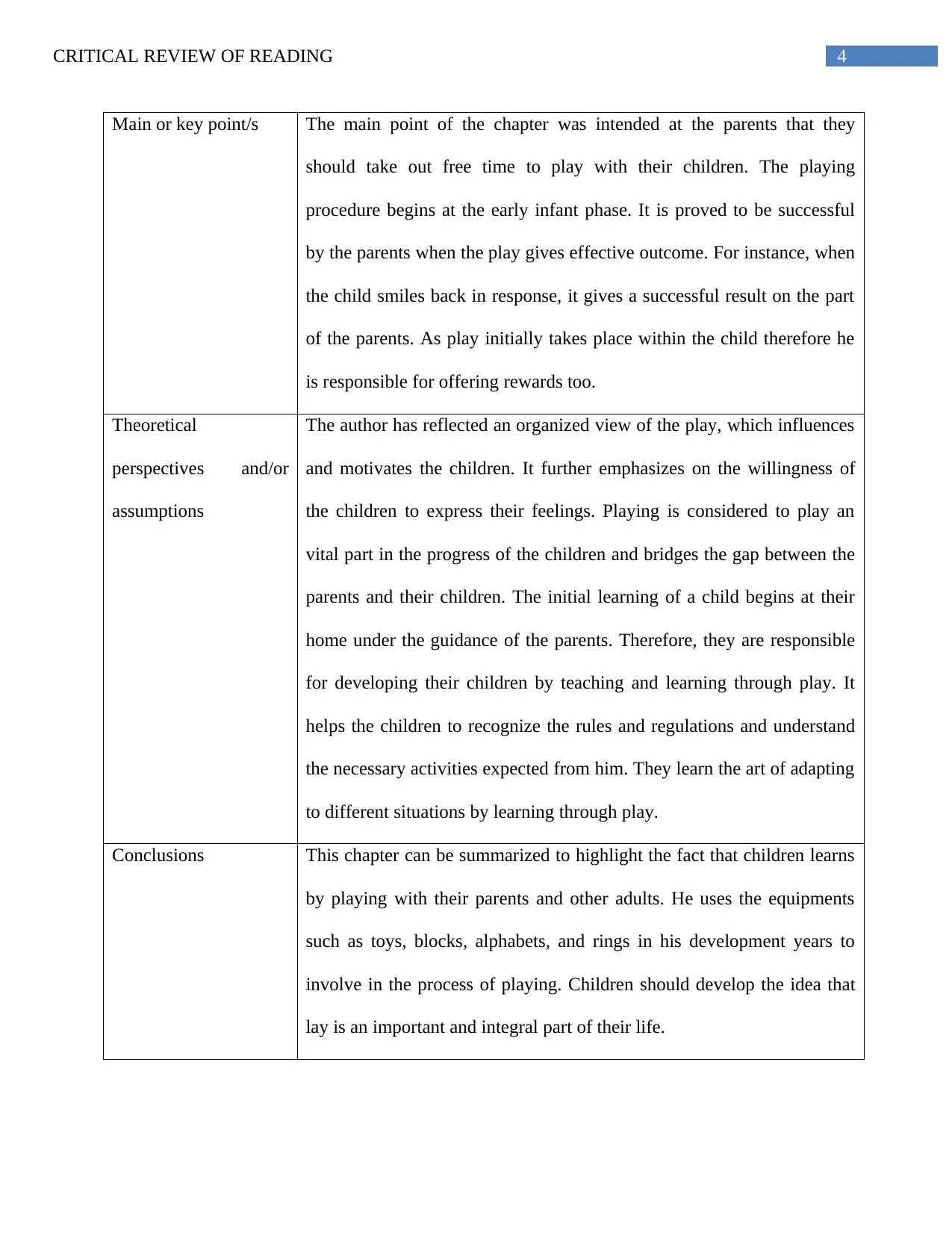
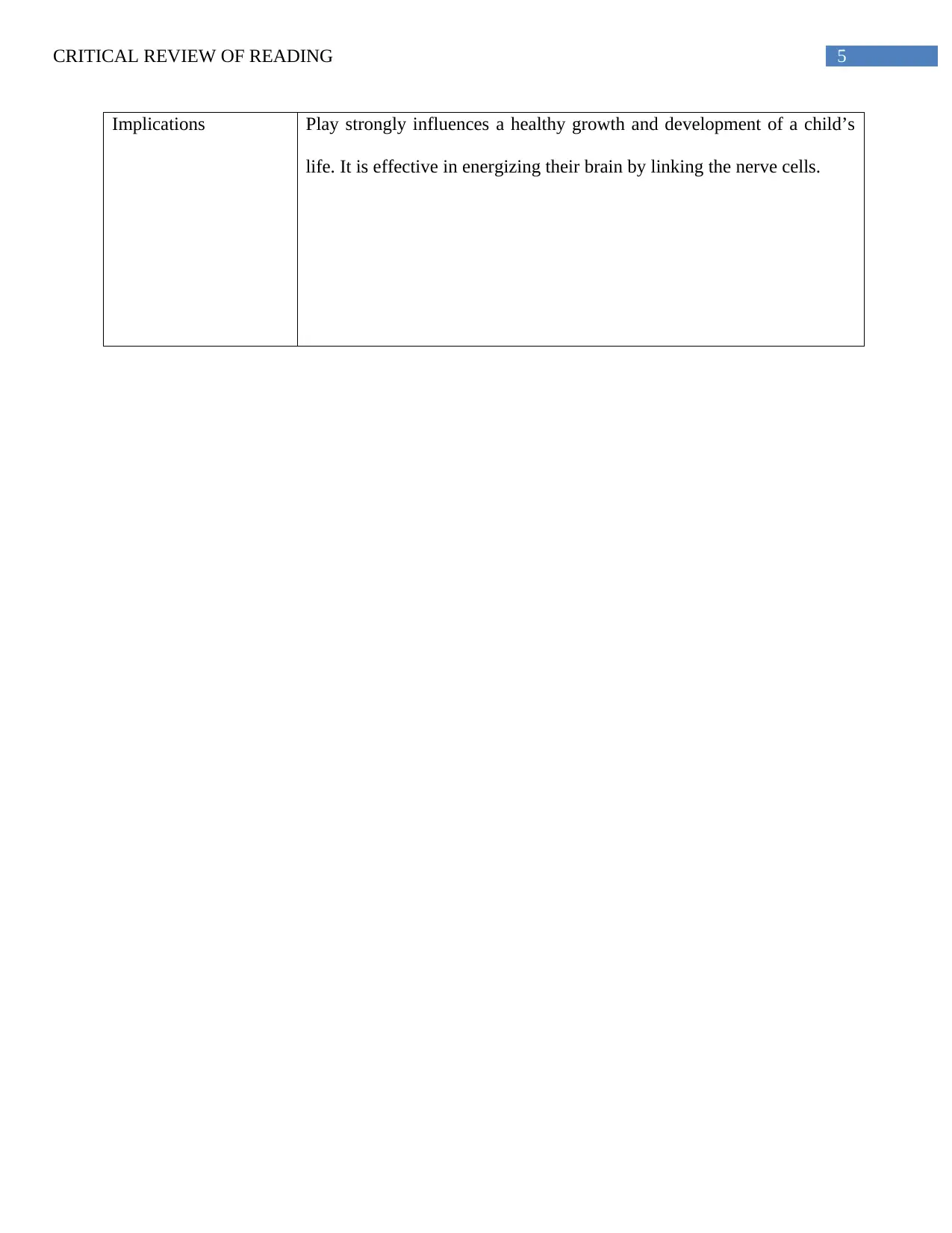
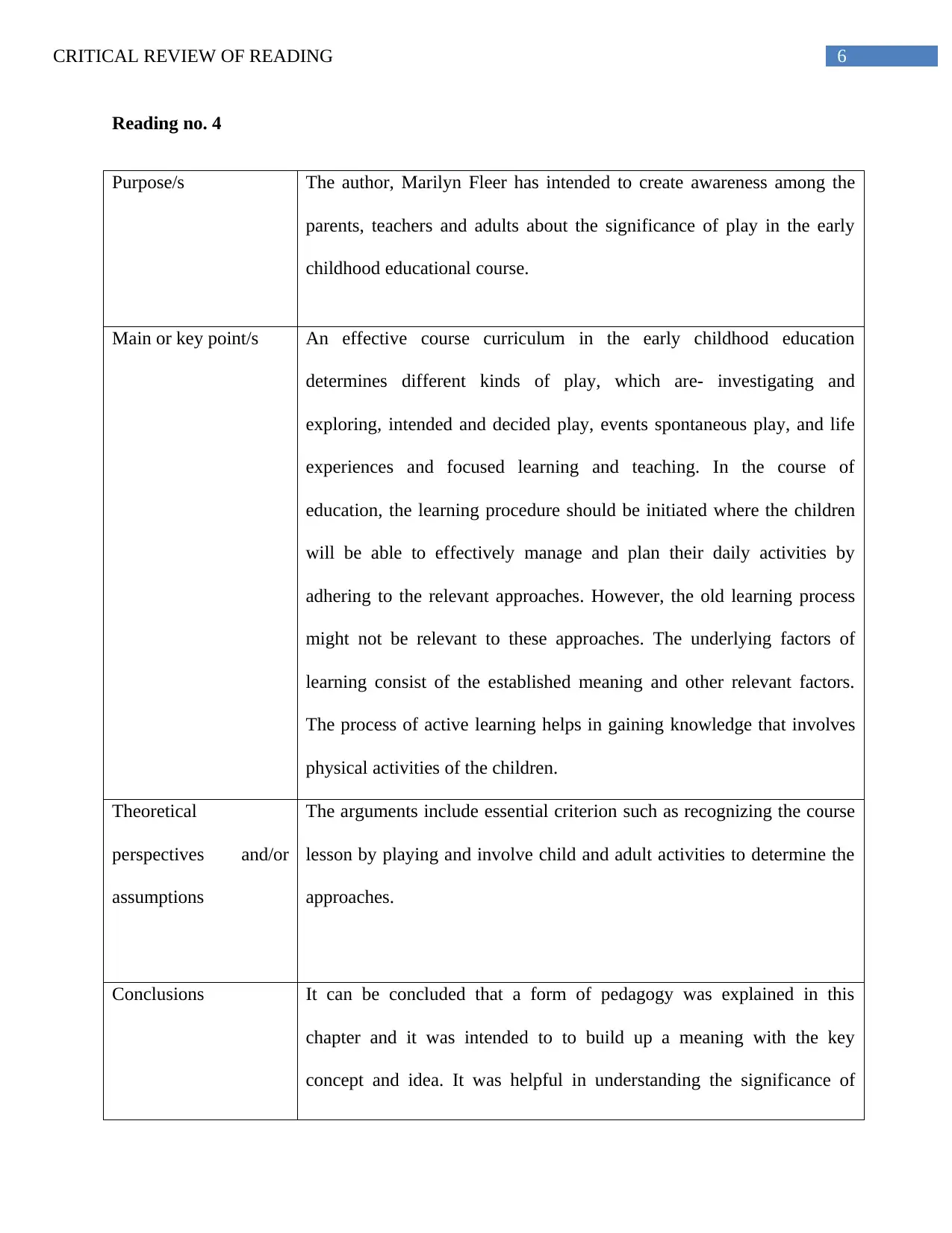
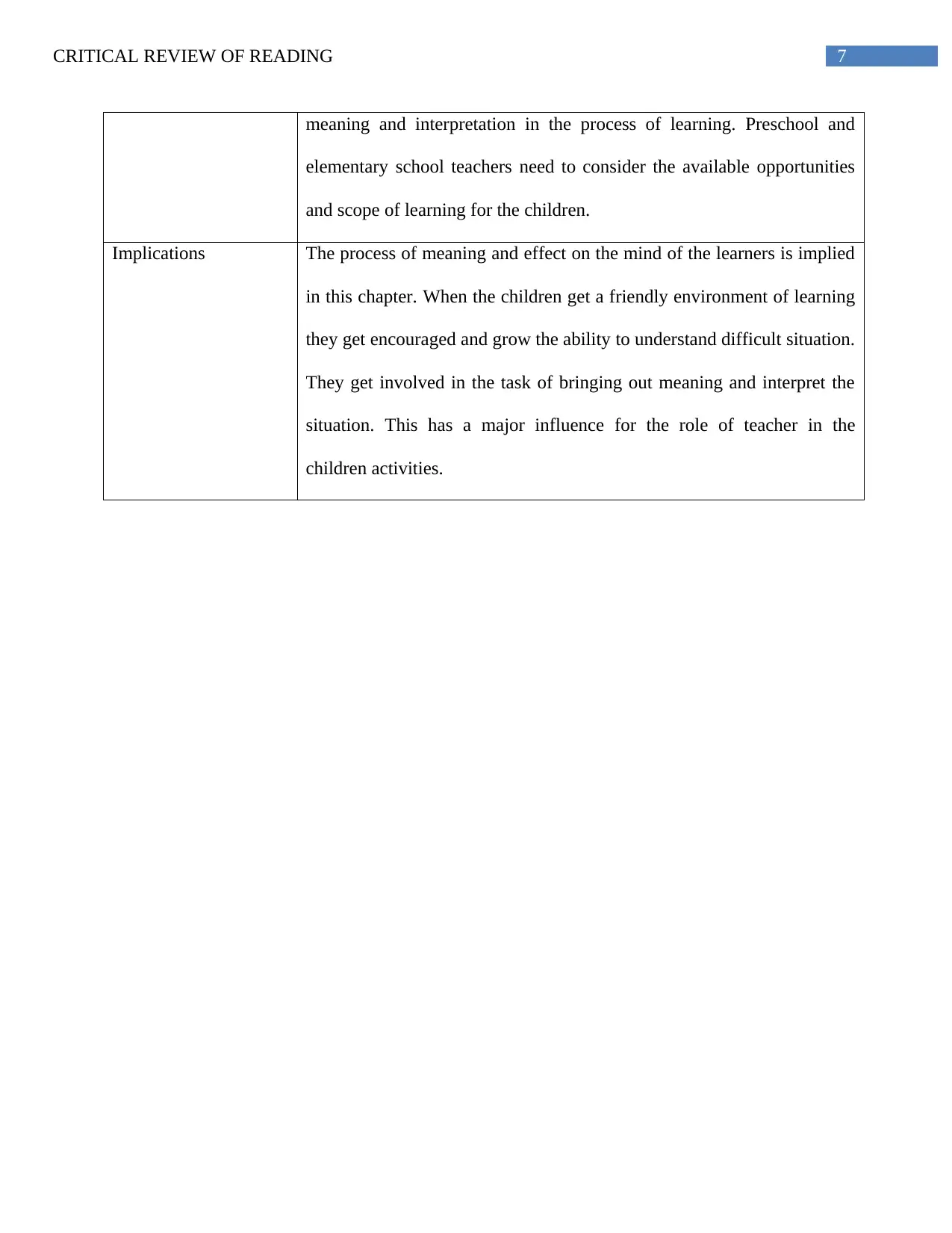
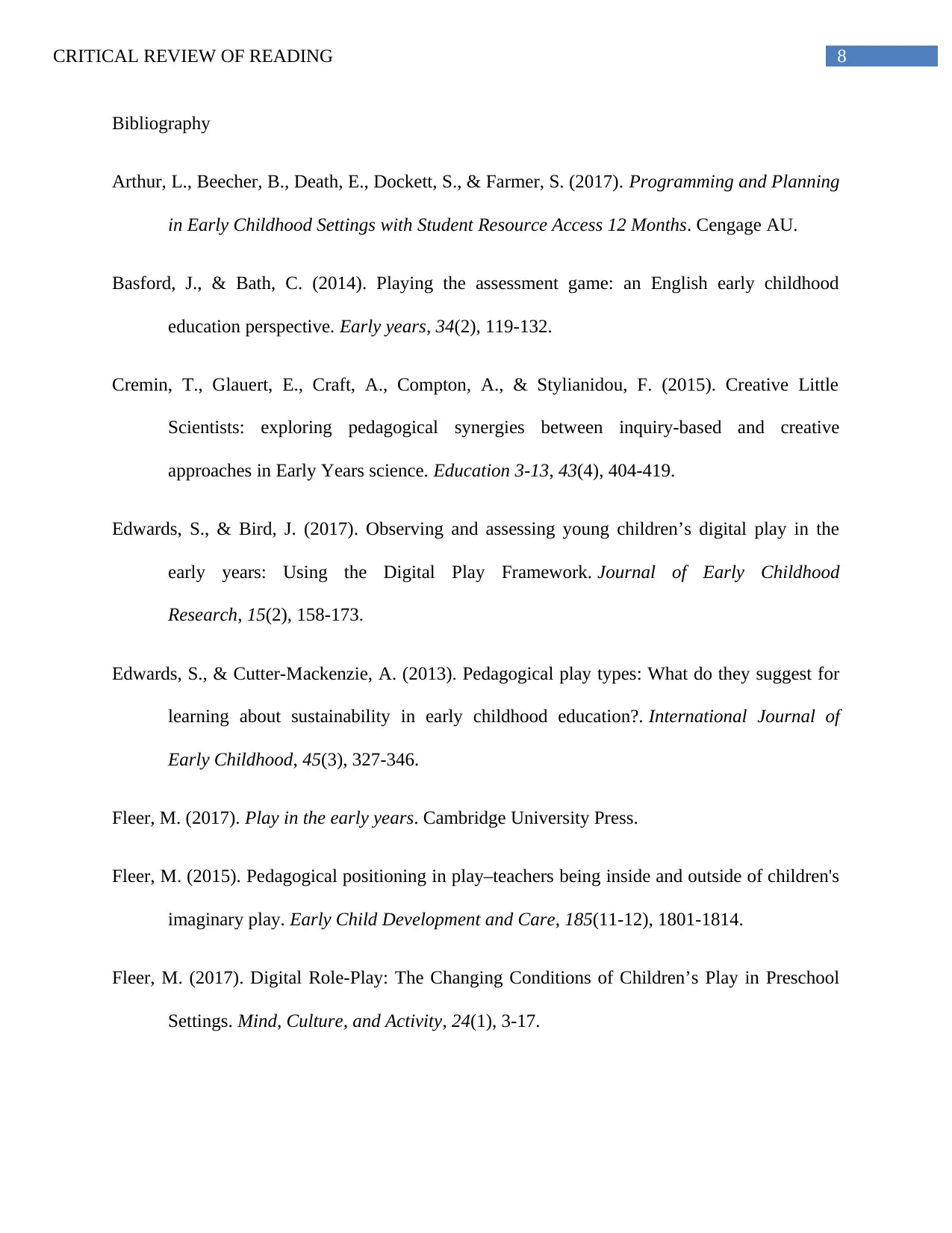





![[object Object]](/_next/static/media/star-bottom.7253800d.svg)